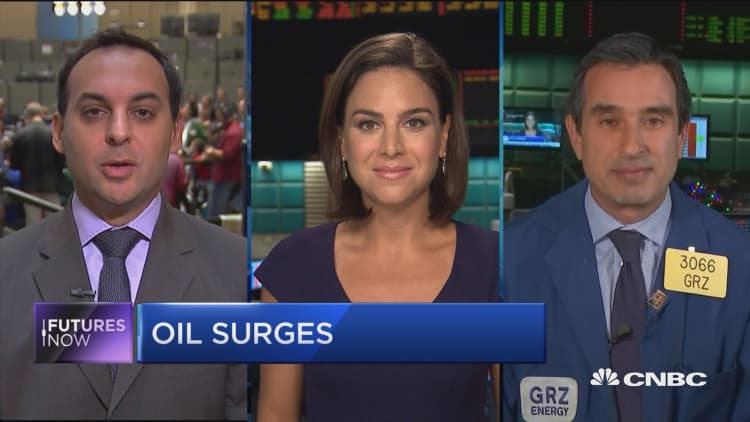
Tropical storms and Hurricane Hermine combined to slow the movement of oil tankers and shut in offshore drilling, forcing the U.S. oil industry to dip into its massive oversupply at the highest rate for this time of year.
In the past week, the industry used 14.5 million barrels in storage, largely from the East Coast and Gulf Coast, according to government data. Analysts blamed wind and rough seas resulting from Gaston, Hermine and other storms that have impeded ships with cargoes headed for U.S. refineries.
As a result, there was also a sharp decline of 1.8 million barrels a day in U.S. imports — oil that comes from places like Saudi Arabia and Nigeria. Gasoline stocks also fell by 4.2 million barrels. While the storms threatened the Gulf of Mexico, 12 percent of U.S. oil drilling in the Gulf was temporarily shut in.
Oil prices jumped on the weekly Energy Information Administration report, adding to gains made late Wednesday on similar data from the American Petroleum Institute. West Texas Intermediate futures for October settled at $47.62 per barrel, a gain of more than 4.6 percent.
"This is an aberrant report of the first order," said John Kilduff of Again Capital. "I think the East Coast shipments were probably affected by Gaston earlier. There was also a barge that got sunk in the Houston Ship Channel. That also affected the ability of ships to move in and out of the channel."
Kilduff said the runup in oil prices is overdone though there could be further impacts in next week's data from Hermine which swirled off the East Coast. A positive for prices was the fact that oil production declined last week, instead of rising as it has lately. The U.S. produced 8.46 million barrels last week, down from 8.49 million.
Gene McGillian, Tradition Energy manager market research, said prices also appear to be rising, as traders with short positions are forced to buy. "I think that's what's happening since it looks like the drop in crude imports takes a lot of mystery out of why we see this massive drop in inventories," he said.
The draw in oil inventories last week amounted to 2.8 percent of the total crude in U.S. storage, outside of the government's Strategic Petroleum Reserve.
"It chips away a little bit," said Andrew Lipow, president of Lipow Oil Associates.
Even with the storms, U.S. refiners increased the amount of oil they process to over 17 million, the highest level since 1990, said Lipow. "It continues to turn the crude oil surplus into a product surplus," he said.
According to EIA data, oil inventories across the nation drew the most for this time of year since records were kept starting in 1982. There was one other larger draw in January 1999 of 15.2 million barrels which Lipow said was likely was related to possible end-of-year inventory considerations.
"I suspect over the next few weeks we're going to see inventories recover to a certain extent, as the imports catch up," said Lipow. "There's still plenty of oil out there. What we're seeing is the result of storm impacts on vessel shipping at the same time we still see members of OPEC to increase their oil production."
The cartel meets at the end of the month in Algeria with Russia and other producers. Russian President Vladimir Putin and Saudi Deputy Crown Prince Mohammed bin Salman met on the sidelines of the G-20 meeting, and the two countries issued a statement of cooperation which also helped lift prices this week.
"I think we'll see more volatile trading ahead of the OPEC meeting," said McGillian.
Natural gas futures also rose nearly 5 percent Thursday on the government report of a smaller-than-expected injection of gas into storage.
"That looks to be disrupted by the storms as well," Kilduff said.


